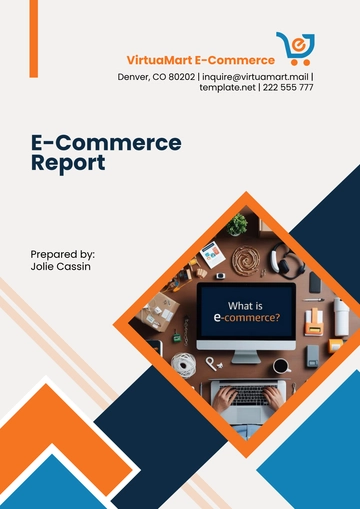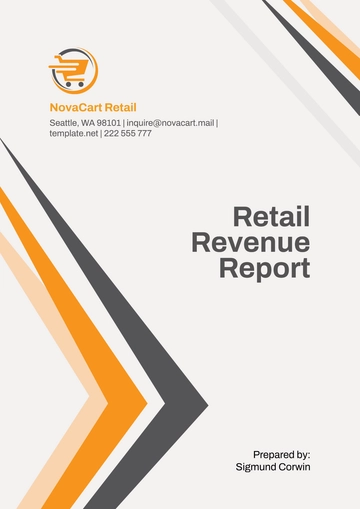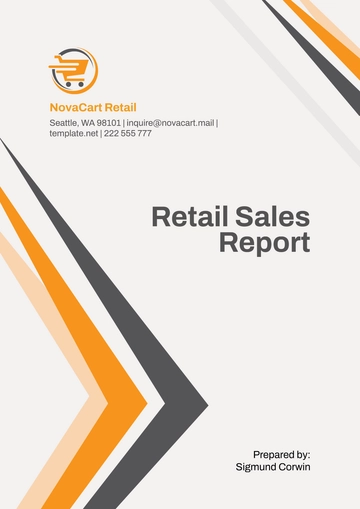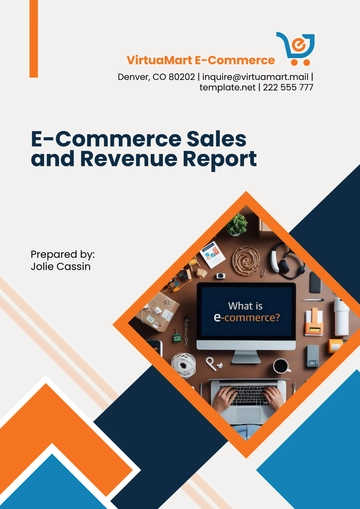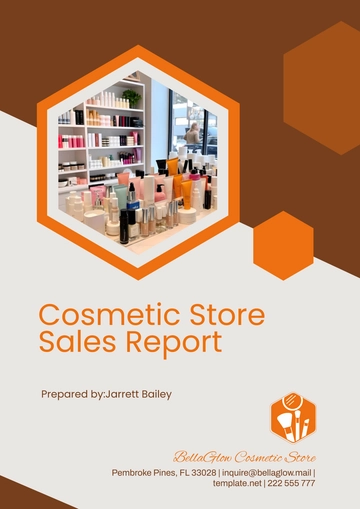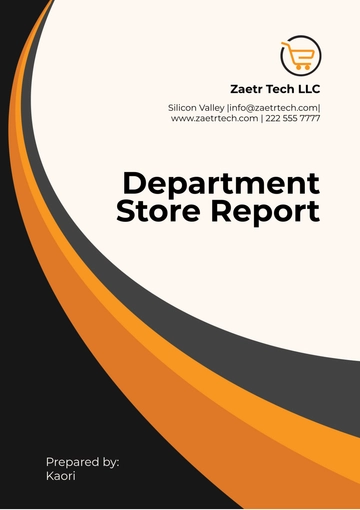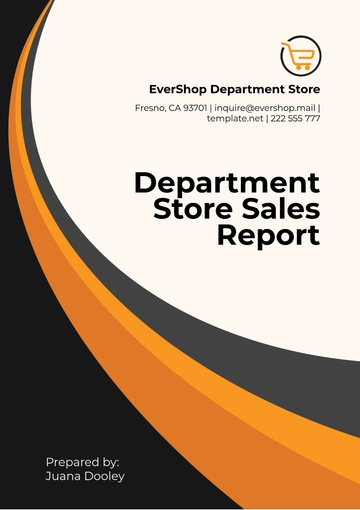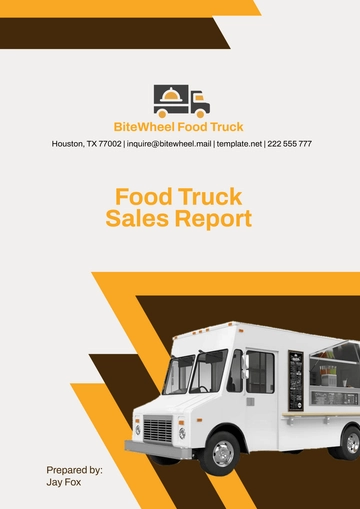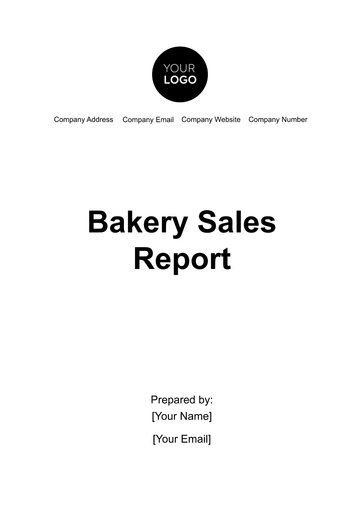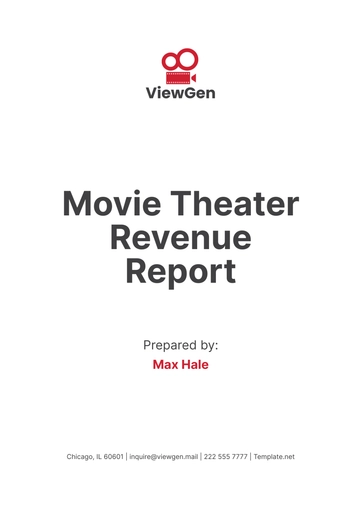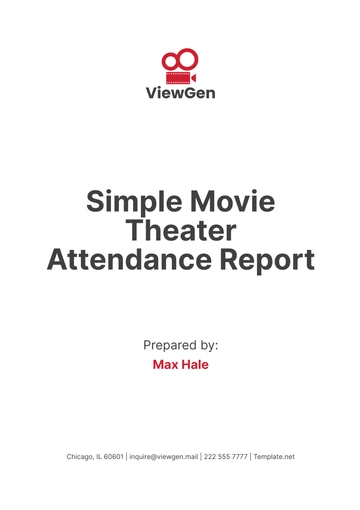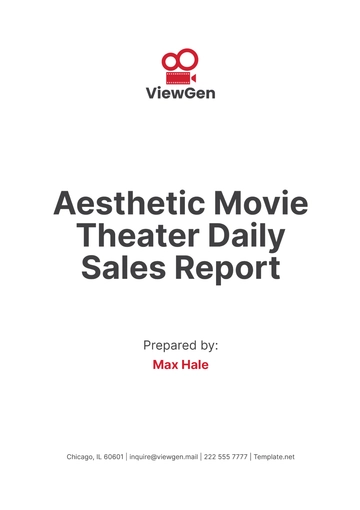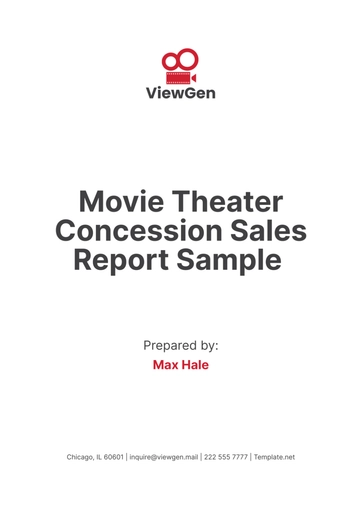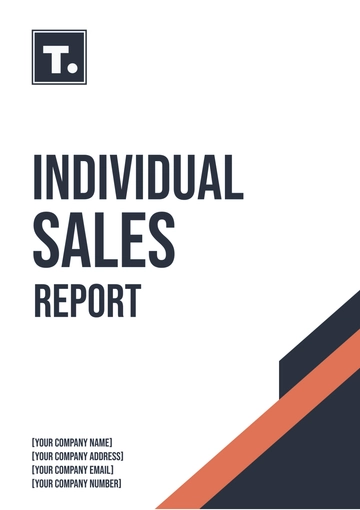Free Sales Year-End Report on Onboarding Progress
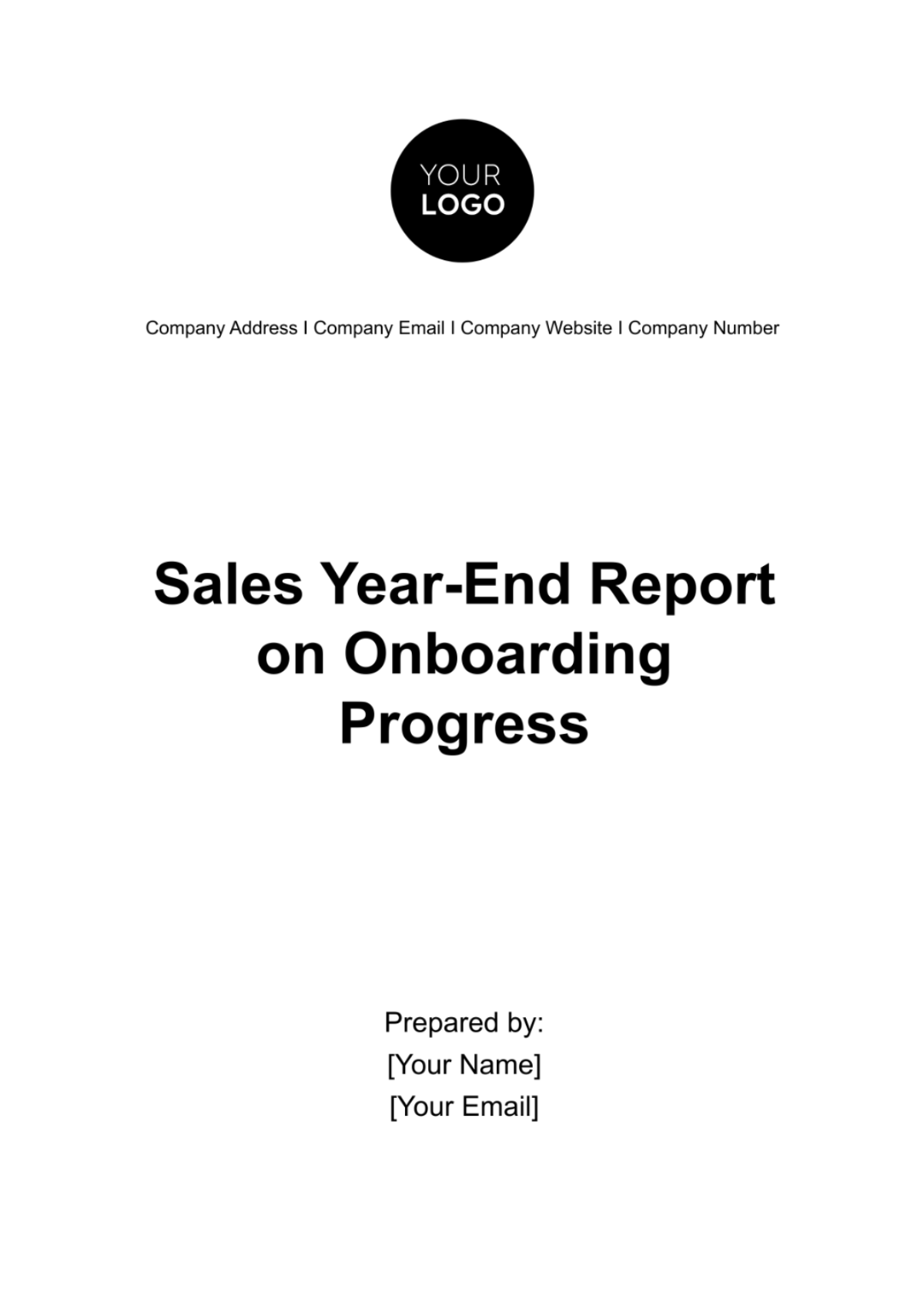
Onboarding Progress
I. EXECUTIVE SUMMARY
In this Sales Year-End Report, we will provide an overview of the onboarding progress for [Your Company Name] during the year 2052. The report covers key milestones, achievements, and challenges in the onboarding process. This comprehensive analysis reflects our commitment to enhancing the sales team's performance across diverse industries.
II. INTRODUCTION
Welcome to the Sales Year-End Report for [Your Company Name]. As we look back on 2052, our primary focus remained on optimizing the onboarding process to ensure our sales teams across various sectors start their journey with us on the right foot. This report provides insights into our efforts, progress, and plans for the future.
A. Onboarding's Significance
Effective onboarding plays a pivotal role in the success of our sales teams. It's not merely about introducing new hires to our company; it's about equipping them with the knowledge, skills, and confidence required to excel in their roles. In a rapidly changing business environment, our onboarding process serves as the cornerstone for driving productivity and nurturing the talents that will drive our future growth.
B. Diverse Business Landscape
One of the key strengths of [Your Company Name] is our ability to adapt to a diverse business landscape. From technology and healthcare to finance and manufacturing, our sales teams operate across various industries. This diversity necessitates a dynamic and tailored approach to onboarding, which this report will delve into in greater detail.
C. Purpose of This Report
This year-end report aims to provide a comprehensive overview of our onboarding efforts in 2052. It serves not only as a record of our achievements but also as a guide for our future endeavors. We believe that transparency and continuous improvement are vital, and this report is a testament to our commitment to those principles.
III. ONBOARDING PROCESS OVERVIEW
A. Onboarding Framework
Our onboarding process is built on a strong and flexible framework, designed to accommodate the diverse needs of our sales teams.
Comprehensive Training
Our training regimen combines both in-person and online modules to cater to different learning styles. In-person sessions facilitate personal connections and hands-on learning, while online resources provide flexibility and accessibility. This balanced approach ensures that every team member, regardless of their background, can learn effectively.
Mentorship
Recognizing the importance of learning from experienced peers, new hires are paired with seasoned sales representatives who serve as mentors. This mentorship program fosters professional relationships, supports knowledge transfer, and provides ongoing guidance.
Resource Repository
To empower our sales teams, we maintain a centralized repository of sales materials, accessible at any time. This repository contains product information, sales strategies, and industry-specific resources. This repository facilitates self-paced learning and enables our teams to stay updated on the latest materials and best practices.
Feedback Loops
To maintain a high standard of quality, we have established regular feedback sessions for new hires. These sessions provide an opportunity to gauge their progress, address concerns, and make necessary adjustments. The feedback loop is not only for performance evaluation but also for nurturing a culture of continuous improvement.
B. Onboarding Timeline
Our onboarding process is structured over a six-week period, divided into key phases:
Week 1-2: Basic Orientation
The first two weeks are dedicated to introducing new hires to [Your Company Name]'s culture, values, and mission. We emphasize the importance of aligning personal goals with the company's objectives and build a sense of belonging.
Week 3-4: Product Knowledge and Sales Strategies Training
In the next two weeks, new hires delve into the specifics of our products and services. They learn about our market positioning, competition, and effective sales strategies. This phase equips them with the foundational knowledge required for sales success.
Week 5-6: Shadowing and Real-World Application
The final two weeks of onboarding focus on practical experience. New hires shadow experienced sales representatives in real-world sales scenarios, allowing them to apply their knowledge, practice sales techniques, and build confidence in their roles. This phase bridges the gap between theory and practice, preparing them for the challenges of the field.
IV. ACHIEVEMENTS
In 2052, our relentless commitment to improving the onboarding process bore fruit with a series of remarkable achievements. These milestones demonstrate our dedication to equipping our sales teams with the knowledge, skills, and tools they need to thrive in a dynamic business environment.
A. Reduced Onboarding Time
One of our most notable accomplishments was the substantial reduction in the average time it takes for new sales hires to reach full productivity. In 2052, we managed to cut this time by an impressive 15%. This achievement is a testament to our streamlined onboarding processes, which now ensure that new hires integrate more swiftly into their roles, contributing to the company's bottom line sooner.
B. Increased Sales Performance
Our investment in refining the onboarding experience translated into tangible results. Newly onboarded sales representatives consistently outperformed their predecessors by an impressive 12% in their first quarter. This increase in performance not only reflects the effectiveness of our training programs but also demonstrates the alignment of our sales teams with the company's mission and strategies.
C. Enhanced Engagement
Employee engagement is a key driver of success, and we made substantial strides in this area in 2052. The introduction of gamified onboarding elements was a pivotal step. These gamification components were integrated into the training modules, making the onboarding process more interactive and enjoyable. This approach led to higher engagement rates among new hires, ensuring they were not only well-prepared but also enthusiastic about their roles from day one.
D. Diverse Training Modalities
In line with our commitment to catering to various learning styles, we expanded our training modalities in 2052. While we maintained traditional in-person training, we also introduced a range of online modules. These digital resources include video tutorials, interactive quizzes, and immersive e-learning experiences. As a result, new hires can choose the learning methods that best suit their individual preferences and needs, ensuring a more well-rounded onboarding experience.
E. Feedback-Driven Improvements
Listening to feedback is integral to our continuous improvement process. In 2052, we established a robust feedback mechanism where new hires could provide input on their onboarding experiences. This feedback loop enabled us to identify areas for enhancement promptly. We implemented numerous improvements based on this feedback, ensuring that our onboarding process remained agile and responsive to the needs of our sales team members.
V. CHALLENGES ENCOUNTERED
Our journey in 2052 was marked by remarkable achievements, but it was not without its share of challenges. Identifying and addressing these challenges is essential for continuous improvement in our onboarding process.
A. Adapting to Remote Onboarding
One of the most prominent challenges we faced was adapting to a remote onboarding model. The global shift towards remote work required us to reimagine our onboarding strategies.
Connectivity Issues: Many new hires encountered connectivity issues, affecting their access to online training materials and mentorship sessions. We responded by providing IT support and improving access to resources.
Engagement Challenges: Maintaining high levels of engagement in a virtual environment proved more challenging. To overcome this, we introduced interactive virtual sessions, webinars, and gamified elements to keep new hires actively involved.
Mentorship and Coaching: Transitioning from in-person mentorship to virtual mentorship had its challenges. We enhanced mentorship programs by providing mentors with advanced communication and collaboration tools.
B. Industry-Specific Knowledge
As we diversified our clientele, we realized the importance of tailoring our onboarding content to suit different industries.
Content Customization: Developing industry-specific training materials and case studies was resource-intensive. We invested in subject matter experts to create tailored content for each industry.
Regulatory and Compliance: Certain sectors, such as finance and healthcare, require extensive training on industry-specific regulations and compliance. We integrated this specialized content into the onboarding curriculum.
Skill Set Diversity: Adapting the onboarding process to meet the varied needs of industries demanded flexibility. Our onboarding team received cross-training to better address the unique demands of each sector.
C. Measuring Soft Skills
Evaluating soft skills, such as adaptability, emotional intelligence, and communication, was another challenge. While we understood their importance, assessing these intangible qualities objectively proved elusive.
Survey-Based Assessment: We initially relied on self-assessment surveys, but these often lacked objectivity. In response, we developed a more comprehensive assessment tool, combining peer feedback, self-assessment, and AI-based evaluations.
AI-Enhanced Soft Skills Training: To address this challenge, we introduced AI-powered soft skills training modules. These modules provide real-time feedback and personalized guidance, enhancing the development of essential soft skills among new hires.
VI. ONBOARDING METRICS
Evaluating the effectiveness of our onboarding process is vital to ensure continuous improvement. Throughout 2052, we closely monitored several key metrics to gauge our performance.
A. Retention Rate
Our retention rate for newly onboarded sales representatives remained a strong indicator of their satisfaction with the onboarding process. We are proud to report a retention rate of 90%, which is a testament to the quality of our onboarding program.
Future Goal: Our aim for 2053 is to maintain or exceed this retention rate, indicating the ongoing satisfaction of new hires.
B. Time-to-Productivity
Reducing the time it takes for new sales representatives to reach full productivity is a top priority. In 2052, we achieved a substantial improvement in this area, with the average time-to-productivity decreasing from 12 weeks to 10 weeks.
Future Goal: In 2053, we aim to further reduce the time-to-productivity, streamlining the onboarding process to ensure sales representatives contribute more swiftly.
C. Feedback Satisfaction
The satisfaction of newly onboarded sales representatives is paramount. In 2052, the average satisfaction rating from new hires was an impressive 4.7 out of 5, indicating high levels of contentment with the onboarding process.
Future Goal: In the coming year, we plan to continue gathering feedback and improving the onboarding process to achieve even higher satisfaction ratings.
VII. INDUSTRY-SPECIFIC ONBOARDING
Understanding the unique requirements of each industry is essential for the success of our sales team. In 2052, we went beyond a one-size-fits-all approach, customizing onboarding content and strategies for the following sectors:
A. Technology
In-Depth Product Knowledge: Recognizing the fast-paced nature of the technology sector, our onboarding process in 2052 placed a strong emphasis on product knowledge. New hires were equipped with in-depth understanding of our product offerings, including their features and applications. They also learned about the competitive landscape, enabling them to provide more tailored solutions to clients.
Adapting to Technological Advancements: In the ever-evolving tech industry, it's crucial for our sales representatives to stay up-to-date with the latest trends and innovations. We integrated weekly sessions to discuss emerging technologies, encouraging a culture of continuous learning and adaptability among our technology sales team.
B. Healthcare
Regulatory Requirements and Compliance Training: The healthcare sector is heavily regulated, and compliance is of paramount importance. Our onboarding for healthcare sales representatives in 2052 was tailored to address these unique challenges. New hires received comprehensive training on industry-specific regulations, ensuring they have a deep understanding of compliance requirements.
Enhanced Communication Skills: Selling in the healthcare industry often involves interactions with medical professionals and decision-makers. In response, we incorporated communication skills training with a focus on building rapport, empathetic listening, and clear, effective communication.
Product Applications in Healthcare Settings: Sales representatives in healthcare need to understand how our products can be effectively utilized in medical environments. In 2052, we included hands-on training sessions that allowed new hires to observe product applications in actual healthcare settings, enhancing their ability to connect our solutions with real-world needs.
VIII. FUTURE INITIATIVES
Looking ahead to 2053, our commitment to continuous improvement remains unwavering. We are planning several exciting initiatives to further enhance our onboarding process:
A. Virtual Reality (VR) Onboarding
As technology continues to advance, we are exploring the implementation of VR simulations for real-life sales scenarios. This immersive approach will allow new hires to practice their sales techniques in a risk-free virtual environment. By simulating various sales scenarios, they can gain confidence, develop their pitch, and refine their closing strategies. This innovative addition to our onboarding process aims to prepare sales representatives for real-world challenges more effectively.
B. Expanded Industry Focus
Diversity in our clientele demands an even broader approach to onboarding. In 2053, we will expand our industry-specific onboarding initiatives to cater to additional sectors. This includes sectors like finance, retail, and manufacturing. By delving deeper into the unique demands of each industry, we can better prepare our sales representatives to address the specific challenges and opportunities they will encounter.
C. Advanced Soft Skills Assessment
Measuring and enhancing soft skills such as adaptability, emotional intelligence, and problem-solving is an ongoing challenge. In 2053, we are planning to employ advanced AI-driven assessments to objectively evaluate and provide feedback on these crucial skills. This will ensure that our sales team is equipped not only with product knowledge but also the interpersonal skills necessary to build lasting client relationships and navigate complex sales scenarios.
IX. CONCLUSION
In 2052, we made significant strides in optimizing our onboarding process for [Your Company Name]. Our commitment to excellence in sales onboarding ensures that we can continue to adapt to the ever-evolving business landscape and empower our sales teams to excel across diverse industries.
Our industry-specific onboarding strategies, future initiatives, and focus on advanced soft skills assessments reflect our dedication to staying at the forefront of onboarding practices. By providing tailored training for various sectors and leveraging cutting-edge technologies, we are poised for a successful 2053 and beyond.
- 100% Customizable, free editor
- Access 1 Million+ Templates, photo’s & graphics
- Download or share as a template
- Click and replace photos, graphics, text, backgrounds
- Resize, crop, AI write & more
- Access advanced editor
Secure your business's year-end reporting with Template.net’s customizable Sales Year-End Report on Onboarding Progress Template. Tailored for different industries, this editable template offers a comprehensive framework to showcase onboarding progress, milestones, and industry-specific insights. Streamline your reporting process and impress stakeholders with this professional, fully customizable template. Get started with our product now through our AI Editor Tool!
You may also like
- Sales Report
- Daily Report
- Project Report
- Business Report
- Weekly Report
- Incident Report
- Annual Report
- Report Layout
- Report Design
- Progress Report
- Marketing Report
- Company Report
- Monthly Report
- Audit Report
- Status Report
- School Report
- Reports Hr
- Management Report
- Project Status Report
- Handover Report
- Health And Safety Report
- Restaurant Report
- Construction Report
- Research Report
- Evaluation Report
- Investigation Report
- Employee Report
- Advertising Report
- Weekly Status Report
- Project Management Report
- Finance Report
- Service Report
- Technical Report
- Meeting Report
- Quarterly Report
- Inspection Report
- Medical Report
- Test Report
- Summary Report
- Inventory Report
- Valuation Report
- Operations Report
- Payroll Report
- Training Report
- Job Report
- Case Report
- Performance Report
- Board Report
- Internal Audit Report
- Student Report
- Monthly Management Report
- Small Business Report
- Accident Report
- Call Center Report
- Activity Report
- IT and Software Report
- Internship Report
- Visit Report
- Product Report
- Book Report
- Property Report
- Recruitment Report
- University Report
- Event Report
- SEO Report
- Conference Report
- Narrative Report
- Nursing Home Report
- Preschool Report
- Call Report
- Customer Report
- Employee Incident Report
- Accomplishment Report
- Social Media Report
- Work From Home Report
- Security Report
- Damage Report
- Quality Report
- Internal Report
- Nurse Report
- Real Estate Report
- Hotel Report
- Equipment Report
- Credit Report
- Field Report
- Non Profit Report
- Maintenance Report
- News Report
- Survey Report
- Executive Report
- Law Firm Report
- Advertising Agency Report
- Interior Design Report
- Travel Agency Report
- Stock Report
- Salon Report
- Bug Report
- Workplace Report
- Action Report
- Investor Report
- Cleaning Services Report
- Consulting Report
- Freelancer Report
- Site Visit Report
- Trip Report
- Classroom Observation Report
- Vehicle Report
- Final Report
- Software Report



